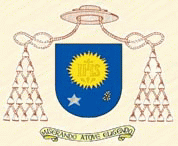
Luke’s gospel [Luke 24:1-12] tells us that on
that first Easter Sunday morning, in response to strange nonsensical-sounding
news brought by Mary Magdalene and others, Peter
ran to the tomb, saw that it was empty, and went home amazed at what had happened. John’s gospel [John 20:1-9] tells us that both Peter and John
ran to see the tomb and also found it empty, but did not yet understand the scripture that he had to rise from the dead.
Peter’s amazement and the disciples’ lack of understanding should not
surprise us. We may suppose that the idea of resurrection makes little
sense to our modern, scientific way of thinking. But in fact it made just as
little sense to Jesus’ contemporaries, his disciples included. In his 2011 book
on the subject, Pope Benedict XVI said:
“Anyone approaching the resurrection accounts in the belief that he knows what
rising from the dead means will inevitably misunderstand those accounts and
will then dismiss them as meaningless.”
Maybe that’s why none
of the gospels give us an actual description of the event itself. Artists have
tried to picture it, of course, but that’s art - highly imaginative art.
We have nothing either visual or verbal that depicts the actual event of Jesus’
resurrection. What we do have, however, both visually and verbally, are the
resurrection’s effects – first of all on the disciples, and then on the world,
and finally on us.
Its effects on the
disciples are what we read and hear in the gospel stories of the visits to an
empty tomb and then later of the appearances of the risen Lord – and still
later in the preaching of Saint Peter and others in the Acts of the Apostles
and in the amazing response of those who heard their preaching, and finally in
the testimony and letters of Saint Paul, who wasn’t there at all at Easter, but
who eventually experienced the risen Lord himself and was forever changed as a
result.
Its effects on the
world were immediately evident in the short term in the enthusiastic response
of Jews and pagans alike to the amazing story the apostles told. In the long
term, its effects have been equally dramatic in how the story has spread and
the Church has grown as a result, in the dynamism that is at the heart of the
Church’s existence in the world and that has propelled it outward in almost
2000 years of world-transforming activity.
Finally, its effects
are evident in us, transformed in mind and changed in heart, by the unique
power of this utterly unexpected event, which has glorified (almost beyond
recognition) the humanity Jesus shares with each of us, and which has brought
us together in a way in which nothing else could have, empowering us not so
much with new knowledge as with a new hope.
(If “knowledge is power,” hope is even more so.)
The resurrection is
God’s powerful alternative to business as usual. None of us were there that first Easter –
and, had we been, we would surely have been as amazed and uncomprehending as
the disciples themselves. But without yet understanding it, the world awoke on
Easter to something totally new. Thanks to the fact that Christ has risen from
the dead, the Christian faith offers an alternative to business as usual, offering
instead to the entire world - and to each and every one of us in it - an
invitation to hope. It is the power of that faith and hope that has brought us,
whether here and now or a long time ago, to the water of baptism, and that
brings us back Sunday after Sunday to hear the rest of the story and to
experience the presence of the risen Christ in the breaking of the bread
and his power in the new people he is transforming us into and the
amazingly wonderful things that we can now do with one another and for the
world as a result
Homily for Easter Sunday, Immaculate Conception Church,
Knoxville, TN, March 31, 2013.













